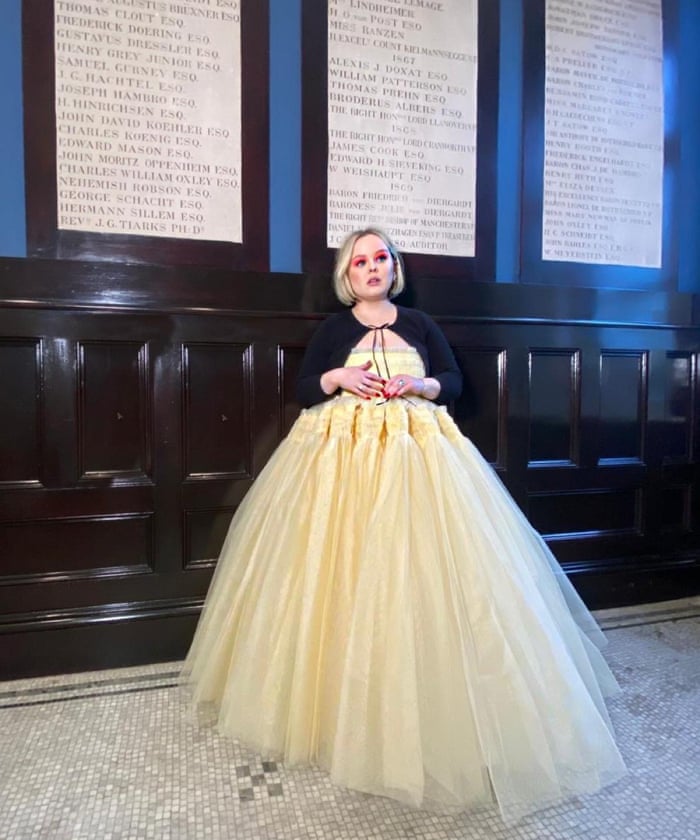
Culture jamming refers to a form if protest used frequently by anticonsumerist social movements. It is a way of disrupting media culture and subverting corporate advertising and mainstream cultural institutions. Culture jamming aims to expose the many ways media control mass society. There are many types and styles of culture jamming. This article will highlight some of the most widely used types. Read on to learn more about culture jamming.
Parody
Cultural jamming is the subversion of corporate messages and media. This method uses all human emotions to challenge large media and corporate advertising. Jonah Peretti's work, a culture jammer who used the Nike symbol as a way to ignite a discussion about sweatshop labor and consumer rights, is a good example. This story was quickly picked up by the media and spread globally, sparking a conversation about sweatshops.

Pranks
Culture jamming pranks can be fun or dangerous, depending on who is involved. Some pranks have a small impact on the people who they are intended to affect, while others have a much greater impact upon the media. Here are just a few examples. The Bhopal BBC hoax reduced Dow's mention, the ongoing health effects, the death toll, as well as legal redress. Some of these pranks, however, have even worse effects.
Humor
One of the ways that cultural jamming can be used in advancing social movements is through the use of humor. This approach involves turning the aesthetic modalities of a medium on its head, turning conventional expectations and emotions on their head. Sven Woodside says that every joke is a small revolution. Parody and satire are great ways to make people re-examine branding and dominant messaging.
Public performance
The Seattle anti corporate globalization protests began in 1999 and lasted until September 11. Post-Cold War triumphalism was replaced by critiques of neoliberal internationalization. Politically engaged art played a key role in these demonstrations. Chuck D and Vernon Reid created the first official "culture jams" back in 2000. They brought together a range of cultural leaders and artists for performances in public spaces.

Iconography
Both culture jamming, and iconography, are forms of cultural reproduction. Both of these practices aim to increase social cohesion or challenge the privatized use public space by economic rulers. They don't have to be mutually exclusive. Sometimes they even work in tandem. Jonah Peretti made an email exchange using a Nike site and it went viral. It was then made into mass media content, raising questions regarding the limits of consumer freedom as well as the implications of fashion statements that were made using child labor from sweatshops.
FAQ
What examples of pop culture are there in 2020?
The music industry is evolving rapidly. We saw artists like Travis Scott and Post Malone reach number 1 on Billboard’s Hot 100 chart. This was an incredible feat for any artist.
The same goes for streaming services. Spotify reported that Spotify streamed more 10 billion hours audio content last year. It's 5x more than the content users were listening to five years ago.
This has resulted a huge shift in the ways people consume media. People now spend most of their time-consuming content rather than creating it.
Everyone, from toddlers to seniors, has an access point to high-quality audio content. This allows anyone to record, edit and mix their music.
To play your favorite song, it doesn't matter if you go to university to study classical instrumentsation. Simply download an application, add your voice and upload them on YouTube.
Don't worry if your not interested in making music. You can always watch other people do it. There are countless channels dedicated to making videos of songs ranging from covers to parodies.
What is Tik Tok pop culture like?
The answer is yes! It's not for teenagers. These short videos can be shared with friends and family to share their emotions, thoughts, and life moments.
It is used by over 200 million people every day around the globe. Every day, this number increases by millions.
TikTok is a great way for brands to connect and create meaningful relationships with consumers.
Many influencers have established huge followings on TikTok. These creators create original content that engages audiences across the globe.
Don't wait! Here are four methods to capitalize on this trend.
-
You can create viral content
-
Engage Influencers
-
Use Visuals Effectively
-
Create with Your Audience
Why is pop music so popular?
Pop music is fun because it is entertaining! Pop music can make you feel happy and give you a feeling of freedom. People listen to pop music, and they are free to think about other things than themselves. They don't have to worry about what other people think. Pop music is a hugely popular genre. People love to listen to songs that are positive and upbeat. If you're feeling down, you can always turn on the radio and hear some upbeat tunes. You may even find yourself singing along. Pop music has been so popular over the years because of this.
What is pop-media culture?
Pop culture is all around. It's everywhere we go: TV, radio, film, music, magazines, newspapers, websites, social networks, etc. It is everywhere we go, 24/7. It influences everything from our clothes, food, music, language, politics, and religion. What exactly is pop culture? Wikipedia states that "Popular culture" refers specifically to ideas and products intended for mass consumption. This term is often used to refer to TV shows, movies and music. Pop culture encompasses much more than entertainment. The term covers everything consumed by the masses. It includes video games, sports and toys, fast food, political campaigns, and many more.
What is popular culture in music?
Popular Music Culture is an ever-changing phenomenon that takes many forms.
The use of certain music styles (e.g. jazz, rock) and lyrics is what defines popular music culture. It also encompasses the influence of visual media, such as film, television, fashion, advertising, etc., on artists' careers and public perception.
It's also about how fans interact with their favorite artists.
Popular music culture has one element: the rise of "superstars", artists who have gained fame and fortune.
These superstars often transcend genres and become cultural icons, and their popularity has influenced the evolution of popular music itself.
The popular music culture also includes:
* The rise in recording technology - from acoustic instruments, to electric guitars, and microphones.
* The invention of record players and radios;
* The birth of rock 'n roll.
* The introductions of film and television;
* The birth MTV and VH1
* The creation of the internet.
How did pop music get started?
It was an accident. The first song was written by mistake when someone accidentally knocked over a piano while playing around on New Year's Eve in 1920.
The recording company liked what it heard and decided that the single would be released.
This was the first ever single to become a hit.
Since then, pop music has become the most popular form of musical entertainment today.
What can pop culture teach us about ourselves?
Our society today places more importance on material goods than all other things. This is especially true for young people. They spend hours each day staring at screens. They watch movies, play video games, and surf the web. All this distracts them and makes it difficult to focus on school work. They end up failing classes as a result.
Everyone wants to fit in. That means being popular. Popularity depends on having money, clothes, and other possessions. This can lead to some people doing things that aren’t right.
Technology has made us dependent. The internet has made it possible to access all sorts of information. However, not all information is accurate. False rumors can be found all over the Internet. These rumors are quickly spread by people sharing them on social media. It is easy to share something without verifying its truth.
People have lost their ability to think critically. They trust everything they read online. They believe everything they read in magazines and on television. They stop thinking for them selves. Instead, they follow the flow of others.
Relying on others for information can cause us to lose control of our lives. Pop culture teaches you to depend on others. It also makes us lazy. While the truth is often out there, we don't always know it.
Statistics
- [17][18][19]Definition[edit]According to author John Storey, there are various definitions of popular culture. (en.wikipedia.org)
- Recently, the market share across Western Europe has ranged from 60-75% (Hopewell, 2013). (socialsci.libretexts.org)
- For example, the term hater meaning someone who strongly undermines or criticizes others, often due to pathetic jealousy, likely emerged from hip hop culture, such as the term playa hateras, used by influential rapper Biggie Smalls as early as 1995. (simplicable.com)
- In 1987, US films captured 56% of the European film market. (socialsci.libretexts.org)
- Latinos represent roughly 19% of the U.S. population. (npr.org)
External Links
How To
Which movie contains the most references to pop culture?
The Matrix, a science-fiction action film directed by Lana Wachowski, was written and directed by Andy Wachowski by Lana Wachowski. Warner Bros. Pictures released the movie on May 21, 1999. Stars included Carrie-Anne Moss (star), Hugo Weaving (star), Laurence Fishburne (star), Mary Alice, Joe Pantoliano and Bruce Willis.
Neo (Keanu Redeves), a computer programmer discovers he is living in a virtual reality simulator called "the Matrix." He sets out to learn how his world came into existence and why he exists within this simulated universe. Along the way, he encounters Morpheus (Hugo Weaving), an agent for the rebel group called Zionists, Trinity (Carrie-Anne Moss), a program created to help him understand the truth behind the matrix, and Agent Smith (Laurence Fishburne).
The film received favorable reviews from critics. It grossed $821million worldwide against a budget US$150 million.
It won many awards, including Academy Award, Golden Globe Awards, Best Motion Picture – Drama, Screen Actors Guild Awards, Outstanding Performance By a Male Actor, and BAFTA, Best British Film.
The Matrix is often considered one of the greatest movies of all time. Time magazine ranked the Matrix #3 on their 2004 list of the 100 most important films since 2000.
In 2007, Empire Magazine listed The Matrix at number 12 on their list of the 500 Greatest Movies Ever Made.
Rolling Stone called The Matrix the 9th most action-packed movie of all time in 2010.
The Matrix Revolutions was released in 2003.
The Matrix serves as a common reference point in video games, particularly first-person shooter ones.
The game series Call of Duty features a mission titled "The Matrix", which takes place after the movie's events.
An episode of South Park entitled "The Death Camp of Tolerance" contains a scene where the characters watch The Matrix.
A scene in Halo 4 (2012) features a character who is watching The Matrix.
Borderlands 2 (2013) features a side quest called "The Matrix"
Destiny (2014) featured a playable character who could use the power weapon "The Nebuchadnezzar," which was based on the gun used in the movie.
Fallout 4 2015 includes a DLC Pack called "The Power Armor Files". It features a short story that takes place in the same universe of the original trilogy. The story revolves around Neo, a character with a power armor suit.
Overwatch 2017, a 2017 videogame, features a character who uses the unique ability of "Matrix Cannon", which can fire energy blasts such as bullets and lasers.
The 2019 videogame Doom Eternal includes a level called "The Matrix".
A Metro Exodus character wears a jacket that has a patch that features the movie's logo.
The 2019 video games Mass Effect: Andromeda (and Shadow of the Tomb Raider) feature a mission titled "The Matrix".
The 2019 Star Wars Jedi Fallen Order video game features a mission called The Matrix, which features Neo-dressed characters.